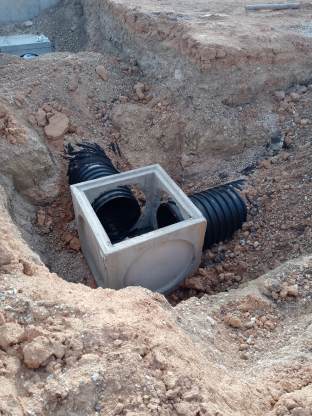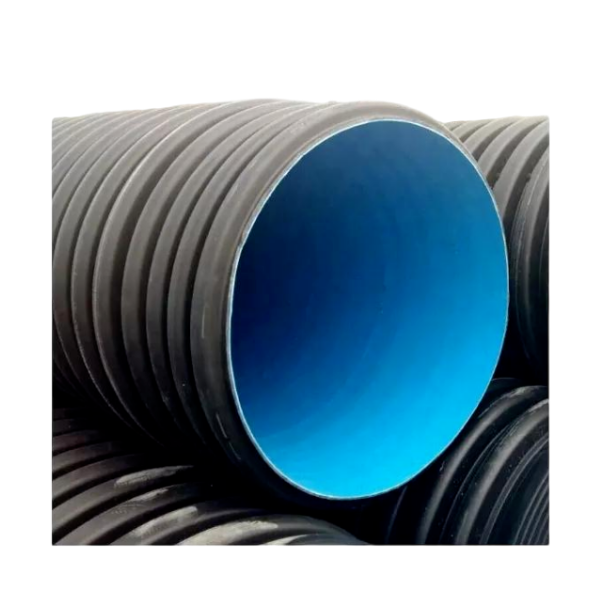OEM factory offers plum bing supplies with your own private label
 shentong
shentong  2025-03-11
2025-03-11
Application of Double Wall Corrugated Pipe in Drainage
Shijiazhuang Shentong Plastic Industry Co., Ltd. specializes in the production of plastic pipes. In the previous article, we introduced the application of double wall corrugated pipes in engineering. Today we will provide a detailed introduction to the application of double wall corrugated pipes in drainage, hoping to help everyone.

Drainage
HDPE double wall corrugated pipes for drainage are a new type of pipe material mainly made of polyethylene resin, added with an appropriate amount of additives, and extruded into shape, suitable for outdoor drainage of buildings and municipal sewage. It has the advantages of light weight, low drainage resistance, high compressive strength, corrosion resistance, and convenient construction, making it an ideal material to replace cast iron pipes and cement concrete pipes.
HDPE structural wall pipes exhibit more economic and social benefits than cement socket pipes
1、 Greatly shorten the construction period and reduce the difficulty of construction
Due to the much lighter weight of HDPE double wall corrugated pipes compared to cement pipes, they are very easy to socket, greatly reducing the difficulty of construction; And the shortest length for HDPE double wall corrugated pipes is 6 meters per piece, while for cement pipes, it is 2.5 meters per piece, greatly shortening the construction period.
2、 HDPE double wall corrugated pipe has low requirements for trench bottom
Due to the fact that cement pipes are made of steel, in order to ensure the effect of bearing and plugging, the bottom of the trench must be treated flat, preferably with a foundation layer, and construction personnel must have an absolute sense of responsibility. HDPE double wall corrugated pipe is a flexible pipe with low requirements for the trench bottom.
3、 HDPE pipes do not break due to ground subsidence or crustal movements
The elongation of HDPE pipe is more than 20 times that of steel pipe and six and a half times that of PVC, but its elongation at break is very high and its elongation is strong. This means that when the ground sinks or the earth's crust undergoes changes during earthquakes, HDPE pipes can undergo resistant deformation without fracture. This is much better than steel pipes and also better than PVC pipes with obvious brittleness. This performance has been proven both domestically and internationally (as evidenced by the fact that the Hanshin earthquake in Japan did not cause pipe breakage; HDPE pipes were not damaged during the Shinan Baoshan earthquake).
4、 The permeability of HDPE pipes is much lower than that of cement pipes, below 2%, and will not cause secondary pollution to groundwater
Cement pipes have no elasticity and although equipped with rubber rings, their sealing effect is poor. Especially for construction personnel, due to the heavy weight of cement pipes, it is difficult to construct, and the effect of bearing and inserting is ignored, resulting in the rubber rings losing their function and increasing the permeability of the pipes.
5、 HDPE pipes have a long service life of over 50 years
The safety period of PE pipes is over 50 years, which has not only been proven by international standards and new international standards, but also by advanced countries. Cement management theoretically has a service life of 20 years, but it is a silicate type that has been corroded by acid and alkali for a long time, greatly reducing its lifespan. There are instances throughout the country where cement pipes have to be replaced within a few years due to sewage leakage causing ground subsidence and interface breakage.
6、 The inner surface of HDPE pipe is smooth, without positive or negative charges, and without scaling
Cement pipes are prone to scaling, which reduces the pipe diameter and affects the flow rate.
7、 HDPE is lightweight, easy to transport and install, and has no loss
Cement pipes are of heavy quality and are not easy to transport and install, and are prone to wear and tear during transportation and installation.
8、 When the flow rate, slope, and burial depth of the pipeline are the same, HDPE can be one or two smaller models than cement pipes
The inner surface roughness coefficient of HDPE is 0.009, and the inner surface roughness coefficient of cement pipes is 0.014. According to the internationally recognized Xie Cai Law, when calculating the same flow rate, HDPE pipes can be two smaller models than cement pipes. However, in practical applications, it is recommended to make one smaller model. Cement pipes with a diameter of 600 can be replaced with HDPE with a diameter of 500.
